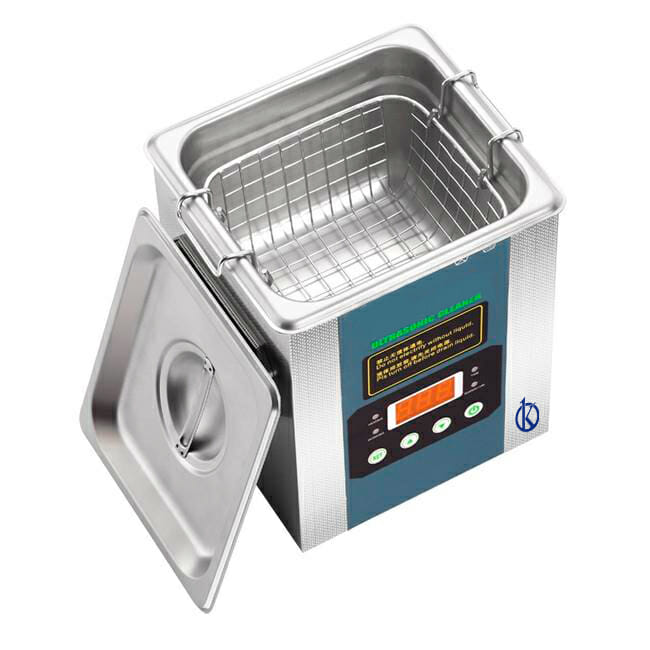Cleaning and disinfection are fundamental in the medical and laboratory sectors. With technological advancement, ultrasonic cleaners have emerged as an innovative solution that offers deep and efficient cleaning.
In this article, we will explore how these devices are transforming medical and laboratory practices, highlighting their benefits, unique features, and how they solve specific problems for users.
We understand that you need equipment that delivers maximum value to your laboratory. We invite you to visit https://kalstein.it/category-product/laboratory-line/ultrasonic-cleaner/, to immerse yourself in our universe of cutting-edge technology equipment. Our prices are competitive and accessible, we combine the convenience of online shopping with the guarantee of an exceptional product. Because you deserve the best, we create and offer top-tier laboratory equipment. Make your choice today, where science comes to life. https://kalstein.it/
Medical Innovation: The Effectiveness of Ultrasonic Cleaners
Ultrasonic cleaner technology has revolutionized the field of medical cleaning. By using high-frequency sound waves, these devices create cavitation, generating microscopic bubbles that explode on the surface of instruments, effectively removing dirt and contaminants. This method is particularly effective for cleaning areas difficult to reach with traditional methods.
The effectiveness of ultrasonic cleaners is reflected in their ability to uniformly disinfect medical instruments, ensuring the elimination of pathogenic microorganisms. This is crucial for preventing nosocomial infections and ensuring patient safety. Moreover, their use reduces the need for harsh chemicals, promoting a safer and more eco-friendly working environment.
Unique Features of Ultrasonic Cleaners
Ultrasonic cleaners stand out due to several unique features that make them indispensable in the medical and laboratory fields. One of the most notable is their ability to perform thorough cleaning without damaging delicate instruments. The cavitation generated by ultrasonic waves is powerful enough to remove contaminants but gentle enough to avoid abrasion.
Another highlighted feature is the capability of ultrasonic cleaners to clean multiple instruments simultaneously. This not only saves time but also enhances operational efficiency. Additionally, many modern models are equipped with digital controls and preset cleaning programs, allowing customization according to the specific needs of the user.
Solutions to Specific Problems: The Advantage of Deep Cleaning
One of the major challenges in cleaning medical and laboratory instruments is the complete removal of residues and contaminants from hard-to-reach areas. Ultrasonic cleaners effectively address this problem. Sound waves penetrate even the smallest crevices and spaces, ensuring thorough cleaning that traditional methods cannot achieve.
Furthermore, in the laboratory research field, cross-contamination can be a significant issue affecting the accuracy of experimental results. Ultrasonic cleaners provide a reliable solution to eliminate any residue from previous experiments, ensuring the purity and precision of subsequent samples and results.
Economic and Operational Benefits
Adopting ultrasonic cleaners offers numerous economic and operational benefits. Firstly, the reduction in cleaning time allows medical and laboratory professionals to focus on more critical tasks, improving overall productivity. Additionally, the extended lifespan of instruments due to more careful cleaning reduces costs associated with equipment replacement.
Moreover, using ultrasonic cleaners can decrease the dependency on costly and potentially harmful chemicals, generating significant long-term savings. These devices also require less maintenance and consume less energy compared to other cleaning methods, contributing to greater operational efficiency and environmental sustainability.
Success Stories: Impact on Medical and Laboratory Practice
Ultrasonic cleaners have proven their worth in numerous success stories in medical and laboratory practice. For example, in dental clinics, these devices have significantly improved the cleaning of complex instruments like dental burs, where residue buildup can be a common issue. The results have shown a drastic reduction in cleaning time and an increase in patient safety.
In research laboratories, the adoption of ultrasonic cleaners has resulted in greater experimental accuracy. The effective removal of chemical and biological residues ensures that results are not compromised by contaminants, allowing for more reliable and reproducible research. These success stories highlight the positive impact of ultrasonic cleaners in various applications.
The Future of Ultrasonic Cleaners in Medical Innovation
The future of ultrasonic cleaners in the medical and laboratory sectors looks promising, with continuous technological advancements that will further enhance their effectiveness and ease of use. Future innovations are expected to include the integration of artificial intelligence to optimize cleaning cycles and automatically detect contamination levels, adjusting cleaning parameters accordingly.
Additionally, expanded research into materials and instrument design will allow ultrasonic cleaners to adapt to an even wider range of applications. This will open new opportunities to improve hygiene and safety in various fields, from biomedicine to laboratory research, solidifying ultrasonic cleaners as an essential tool in medical innovation.
In summary, ultrasonic cleaners represent a revolution in the cleaning and disinfection of medical and laboratory instruments. Their ability to provide deep and efficient cleaning, along with their numerous economic and operational benefits, positions them as an indispensable solution in the pursuit of excellence and safety in medical and laboratory practice. With continuous technological evolution, these devices will continue to play a crucial role in medical innovation and laboratory research.

